

Kunming 昆明
 Go Back - Latest PENANG Sights/Streets/New Properties > Malaysia > World | Hokkien : Lessons : Dictionary | YouTube | Facebook | About Me : Contact Me
Go Back - Latest PENANG Sights/Streets/New Properties > Malaysia > World | Hokkien : Lessons : Dictionary | YouTube | Facebook | About Me : Contact Me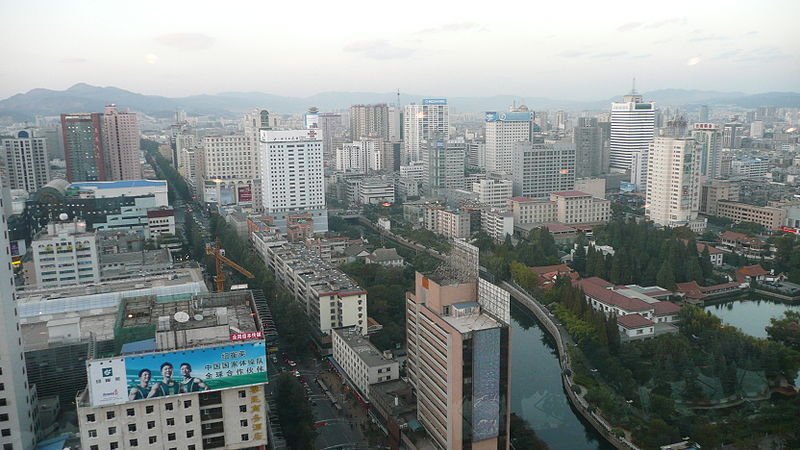 Kunming, China
Kunming, ChinaSource: https://commons.wikimedia.org/wiki/File:Kunming_13.JPG
Author: Brücke-Osteuropa

Kunming (昆明) is the provincial capital of Yunnan Province in southern China. The city is often known as City of Eternal Spring due to its year-round temperate climate. The city of Kunming has a population of 3 million people, in a metropolitan of about 5.7 million people. The medieval part of the city is surrounded by an old city wall.
The area where Kunming is located has been settled as early as 279 BC. Early settlements from the Neolithic age have been discovered on the edge of Lake Dianchi just outside the boundary of the city. In the 3rd century BC, the Dian Kingdom was founded by General Zhuang Qiao in present-day Kunming.
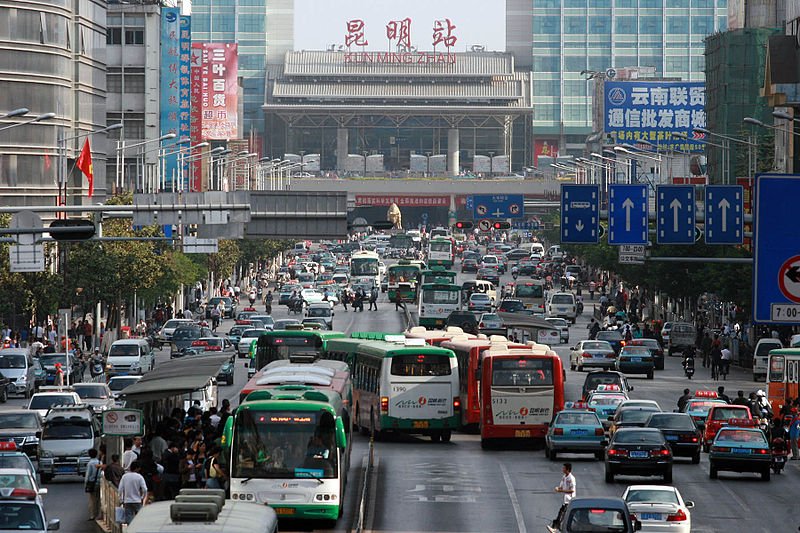 Downtown Kunming, at the main railway station
Downtown Kunming, at the main railway stationSource: https://commons.wikimedia.org/wiki/File:Train_Station_Kunming_Yunnan_China_2008.jpg
Author: Jialiang Gao

Much of Yunnan came under Chinese control during the Han Dynasty (205 BC to AD 220). Under Emperor Wudi of Western Han, the Kunming region was called Yizhou Prefecture. It forms a link between Sichuan and Vietnam.
The city of Kunming was founded in AD 765. At that time, it was known as Tuodong, and it was the successor to the Kingdom of Dali. Following Mongol invasion (1252-1253), Kunming was made the capital of Yunnan in 1276. It grew as a trading center and was said to be visited by Marco Polo who described it as a fascinating place.
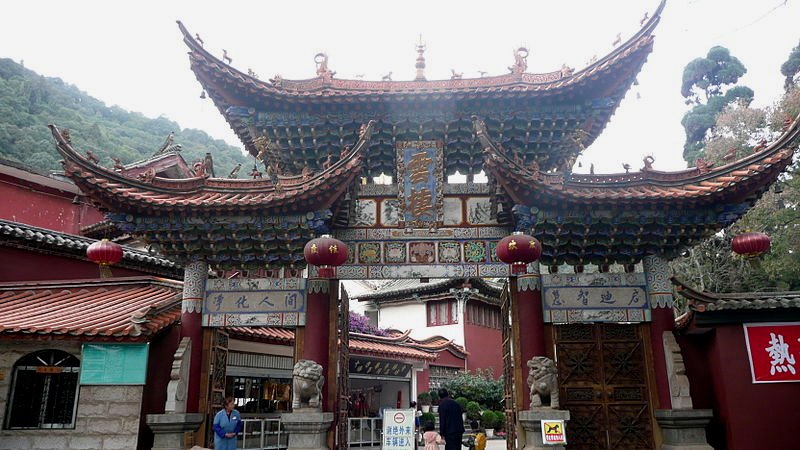 Huating Temple, Kunming
Huating Temple, KunmingSource: https://commons.wikimedia.org/wiki/File:Huating_Temple_02.JPG
Author: Brücke-Osteuropa

Following the defeat of the Mongols, Kunming came under the administration of the Ming Dynasty. That was when its medieval city walls were built. In the 17th century, even after the rest of China had falled under Manchu rule, Kunming continued to be a stronghold of the Ming rulers until the dealth of Ming General Wu Sangui in 1678.
Du Wenxiu, the Sultan of Dali, besieged Kunming between 1858 and 1868. By then most of its Buddhist sites have been razed.
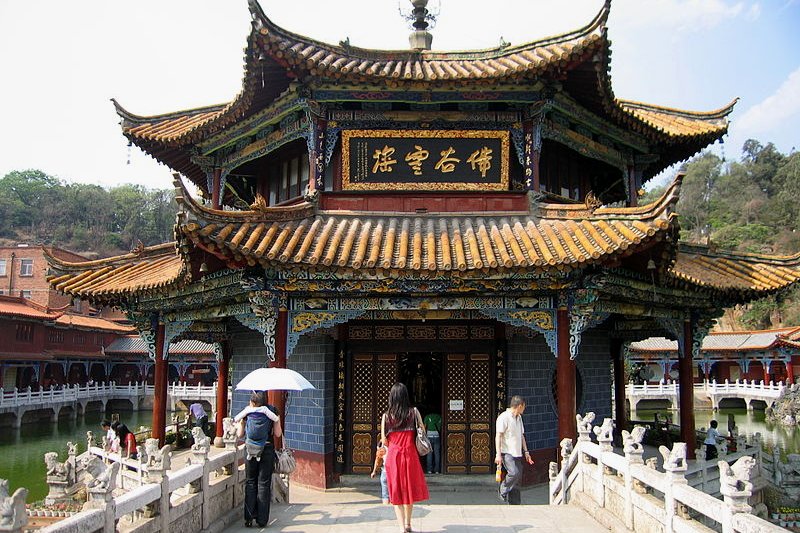 Yuantong Temple, Kunming
Yuantong Temple, KunmingSource: https://commons.wikimedia.org/wiki/File:Yuantong_Si.jpg
Author: Chinatravelsavvy

Kunming's transformation into a modern city was the result of an influx of refugees following the Second Sino-Japanese War of 1937. A number of universities and institutes were established here, and the funds that poured into the city helped it form a manufacturing base for the war time government in Chongqing.
Kunming experiences a booming economy in the 1990's leading up to the World Horticultural Expo held here. Most of the infrastructure of the city was laid in the late 1990's.
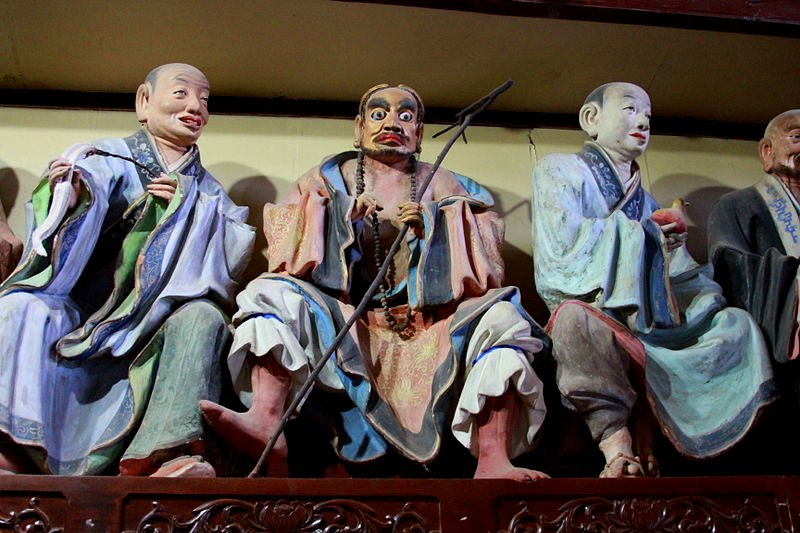 Clay sculptures of Qiongzhu Temple, Kunming
Clay sculptures of Qiongzhu Temple, KunmingSource: https://commons.wikimedia.org/wiki/File:Qiongzhu_arhats_2010_jan_10.jpg
Author: Rolfmueller

Planning your trip to Kunming
By PlaneDue to its distance from other cities in China, most travelers arrive by plane. Kunming International Airport (KMG) gets flights from Bangkok, Kuala Lumpur and Singapore. The present airport is located 9 kilometers to the southeast of downtown Kunming. The bus from airport to city costs ¥2 one way. Taxi to the city will cost you around ¥25 to ¥30.
By Train
You can also reach Kunming by train from Beijing, Shanghai and Xi'an.
Exploring Kunming
Kunming suffers from massive traffic jams on a regular basis. The buses tend to be quite haphazard, stopping anywhere they wish, and not just at designated bus stops. Buy a bus map from a local store if you intend to use the bus to explore.When calling a taxi, note that bigger taxis charge more than small ones. Insist on the meter to avoid being scammed. Some taxis are not allowed into the downtown area during certain times, so do not be surprised if the driver tells you that. Taxi fares start at ¥8 and a fuel surcharge of ¥1 added to the fare.
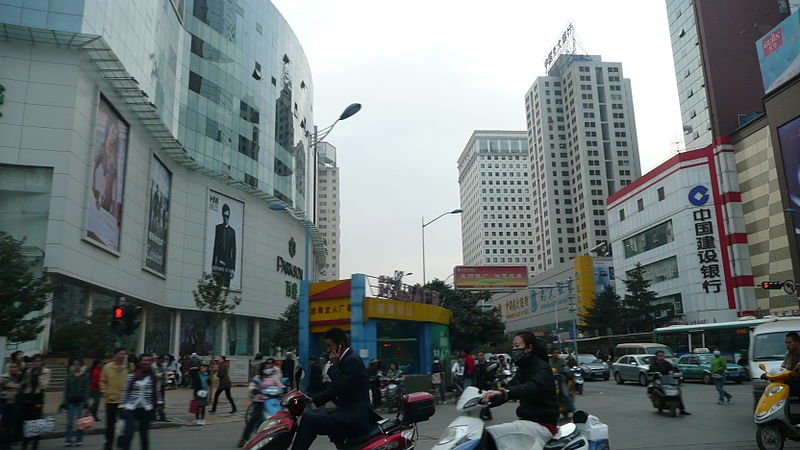 Kunming, China
Kunming, ChinaSource: https://commons.wikimedia.org/wiki/File:Kunming_53.JPG
Author: Brücke-Osteuropa

Places of Interest in Kunming
- Cui Hu Gongyuan
This is a park on the northwest of Kunming. It has pavilions and lotus ponds. - Yuantong Si Temple
This is one of the largest Buddhist temples in Yunnan. It is located at the foot of Yuantong Hill. - Bird & Flower Market
These are the alleyways off Jingxing Jie where you can see a variety of exotic birds and other animals on sale, along with flowers of all types. - Provincial Museum
Museum showcasing the history and culture of Yunnan. Highlights include the ancient drums excavated from the tombs on the shore of Lake Dian. - Muslim Quarter
The enclave where you can see Muslim shops selling things like raisin, noodles and lamb kebabs. Highlight is the 400-year-old mosque, Nanchang Qingshen Si. - Xi Si Ta (Western Pagoda)
13-storey Tang Dynasty pagoda. - City Museum
This museum houses artifacts related to the history of Kunming. Highlight is the Song Dynasty Dali Sutra Pillar. - Jin Dian
A lovely park with flower beds and pine groves on the northeast of Kunming. Highlight of this sight is Jian Dian, or Golden Temple, built in 1671. - Qiongzhu Si Temple (Bamboo Temple)
Tang Dynasty temple rebuilt in the 15th century, this temple is an impressive structure of black and red woodwork. - Lake Dian
Picturesque lake on the south of Kunming with its shore dotted with fishing villages. - Xi Shan (Western Hills)
Hills 16 km to the southwest of Kunming, with scenic views of Lake Dian. - Daguan Pavilion
Three-storey pavilion with scenic view of Lake Dian and Xi Shan. - Dragon Gate Grotto
Tunnels, steps and chambers carved into the mountain by an 18th century monk. - Shi Lin (Stone Forest)
Limestone pillars, a major tourist attraction 120 km to the southeast of Kunming. - Tanhua Temple
Temple built over the thatched shack of Ming scholar Shi Shiqiao. - Kunming Zoology Museum
Museum exhibiting the animals of Yunnan from prehistoric time till present day. Specimens include dinosaur fossils to preserved fish, amphibians and insects. - Yunnan Railway Museum
Small museum detailing the various narrow gauge railways built in Yunnan.
 Latest updates on Penang Travel Tips
Latest updates on Penang Travel Tips
 Discover with Timothy YouTube Channel
Discover with Timothy YouTube Channel
 PG Food Channel
PG Food Channel
 Learn Penang Hokkien YouTube Channel
Learn Penang Hokkien YouTube Channel
 SojiMart Videos
SojiMart Videos
 Share your travels and/or ask a travel-related question
Share your travels and/or ask a travel-related question
Join the Penang Travel Tips Facebook Group to share photos, tips and anything related to your travels, or ask travel-related questions.
 Map of Roads in Penang
Map of Roads in Penang
Looking for information on Penang? Use this Map of Roads in Penang to zoom in on information about Penang, brought to you road by road. Discover with Timothy
Discover with Timothy
Let me take you to explore and discover Penang through my series of walking tours on YouTube. You may use these videos as your virtual tour guide. At the beginning of each video, I provide the starting point coordinates which you may key into your GPS, Google Maps or Waze, to be navigated to where I start the walk, and use the video as your virtual tour guide.Disclaimer
Please use the information on this page as guidance only. The author endeavours to update the information on this page from time to time, but regrets any inaccuracies if there be any.Latest from Discover with Timothy: Gurney Bay - what to see and do there
About this website

Hello and thanks for reading this page. My name is Timothy and my hobby is in describing places so that I can share the information with the general public. My website has become the go to site for a lot of people including students, teachers, journalists, etc. whenever they seek information on places, particularly those in Malaysia and Singapore. I have been doing this since 5 January 2003, for over twenty years already. You can read about me at Discover Timothy. By now I have compiled information on thousands of places, mostly in Peninsular Malaysia and Singapore, and I continue to add more almost every day. My goal is to describe every street in every town in Malaysia and Singapore.
Robbie's Roadmap
- Episode 1: Robbie's Journey to Financial Freedom
- Episode 2: Lost in America
- Episode 3: The Value of Money
- Episode 4: The Mentor
- Episode 5: The Thing that Makes Money
- Episode 6: The walk with a Billionaire
- Episode 7: The Financial Freedom Awakening
- Episode 8: Meet Mr Washington
- Episode 9: The Pizzeria Incident
Copyright © 2003-2024 Timothy Tye. All Rights Reserved.